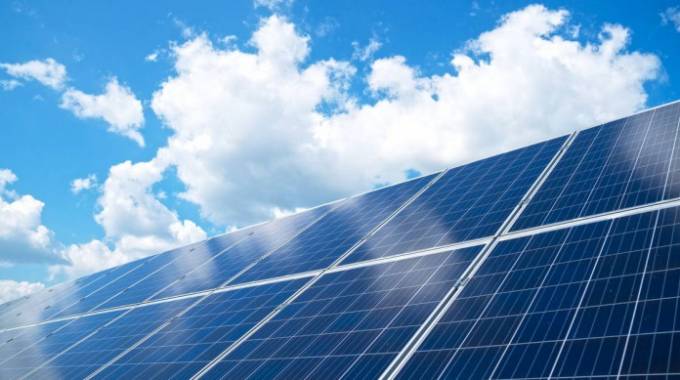Next year the government intends to put a 100MW solar plant in kariba dam. This initiative aims to enhance the power output from the water station and promote the use of energy.
The decision to undertake this project stems from decreasing water levels at the Kariba plant. Under conditions this facility has the capacity to produce 1050MW of power.
Recently Edgar Moyo, Minister of Energy and Power Development highlighted that while Karibas hydropower station is Zimbabwes cost energy source its reliability is diminishing due, to water supply issues.
Currently due, to a water supply Kariba is generating 300MW of power. Gradually they plan to incorporate panels into Lake Kariba. The government has yet to determine the scale of the project.
They are carefully examining the impact it may have on the existing electricity systems as they haven’t reached a decision yet.
There is concern among people that the water in Lake Kariba will deteriorate due, to a prolonged spell caused by El Nino.
This could potentially reduce the amount of energy generated through utilizing this lakes water for power generation.
Commencement date
“If everything goes according to plan we anticipate that the project will commence in February 2024. Following that it is projected to contribute power to our nations electricity grid by, around the middle of the year” he mentioned.
Although various independent power producers (IPPs) have made progress at stages with their projects the latest figures from ZERA indicate that there are currently 46 IPPs, in operation. Together they have a combined power generation capacity of 223 megawatts (MW). Among these IPPs fifteen have. Contributed a 54 MW. The remaining capacity is allocated for their use.”
Minister Moyo said power projects were at different stages, but some of them couldn’t start because they didn’t have enough money.
“We have many IPPs projects at different stages. We are telling people to start them so they complete before the end of next year,” he said..
About the Hwange Thermal Power Station, Minister Moyo said that they talked to bank and other big investors to help improve Units 1 through 6 at their best as possible.
“Because the old equipment we have is not working well, our production levels are low. These units often break down because they are inefficient. We want to improve and modernize Units 1-6 so that more power can be made.” He said.
Government secured a loan of US$ 310 million, from the Export Import Bank of India. The purpose of this funding is to rehabilitate Units 1 6 at Hwange Power Station. It is expected to be disbursed within this year.
During a discussion Engineer Ben Rafemoyo, an energy expert and former ZESA executive emphasized the importance of adopting energy solutions due, to the adverse impacts of climate change.
He also mentioned the possibility of installing 100MW solar plant in kariba dam . This approach has proven successful in parts of the world well so if implemented here it could significantly enhance hydroelectric power generation at the dam.
I believe it’s a good thing. This also lessens water loss in the dam. At the same time, it’s a good place for making energy from sunlight.
“For sure, we know that Lake Kariba is used for boating and fishing. So it’s about making certain zones where they will rent out land so people can put up solar plants there.”
Eng Rafemoyo said that carrying out the project on land has some limits. After solar panels are put on farmland, it is dedicated to making energy.
“But at the big lake like Kariba, there’s still water. If they put up solar panels (sun powered devices), then definitely know how high water can get inside it. So their setup doesn’t mess with anything.” No matter if it’s little or a lot, that doesn’t change anything.
“They’re just saying that the whole area, around 300 kilometers of the dam from one side to another is not being used. The water there goes away into air.”
“The empty space above the water in a dam is where we think of floating solar panels. If El Niño happens or not, if we want to use green energy then this way done.” He said so.
Read also Zimbabwe Grants Approval for 50MW Solar Power Plant Development in Shangani.

